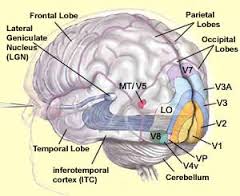Short answer
Intracortical projections can be routed directly to other cortical areas (cortico-cortical projections), or via the thalamus (cortico-thalamo-cortical projections).
Background
Intracortical projections do not have to cross the thalamus or other subcortical structures. Take for example the visual system - it features many cortical projections and these connections do not alwaydsalways enter the thalamus or other subcortical structures (Fig. 1). These connections are called cortico-cortical projections (e.g., Guandalani, 1998). Connections going via the thalamus, however, also exist in the visual cortex (e.g., Kato, 1990) and are referred generally to as cortico-thalamo-cortical projections.

Fig. 1. Visual system. source: McGill
The projections from the LGN to primary cortex (V1 in Fig. 1) and via V2, V3, V4 up to V5 all may occur without visual information entering the thalamus or other subcortical structures.
Also note that on the cellular scale direct cortico-cortical connections in the cortex are abundant (Fig. 2).

Fig. 2. Local cellular connections in the visual cortex. source: Kang et al. (2014)
Reference
- Guandalani, Brain Res Bull; 47(4): 377–85
- Kang et al., Front Syst Neurosci (2014); 8: 172
- Kato, Brain Res; 509(1): 150–2